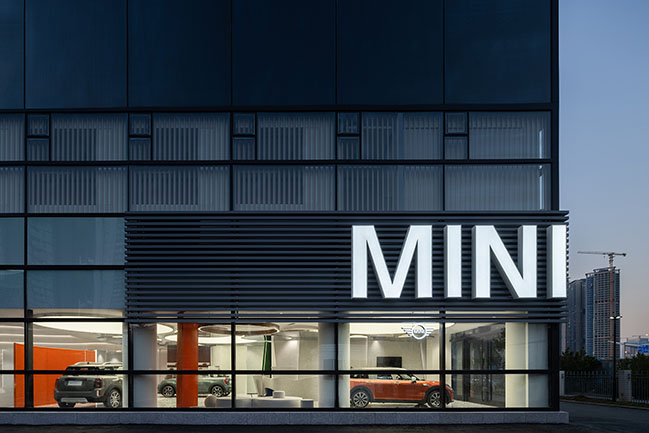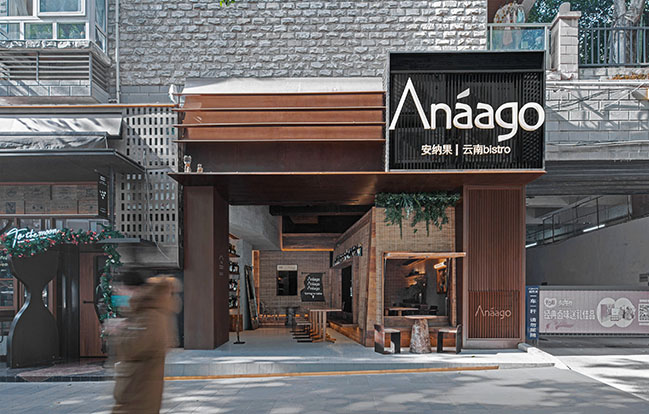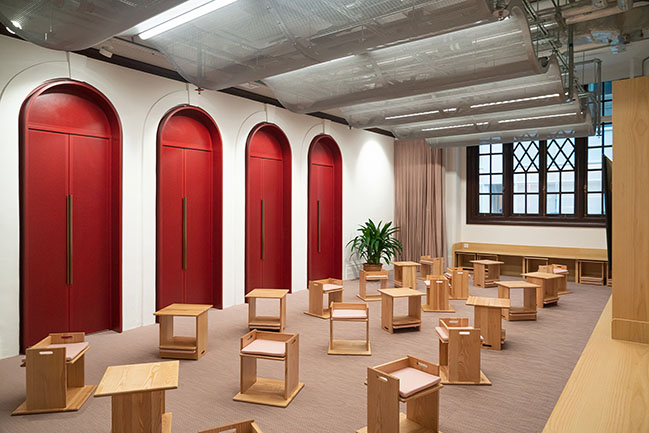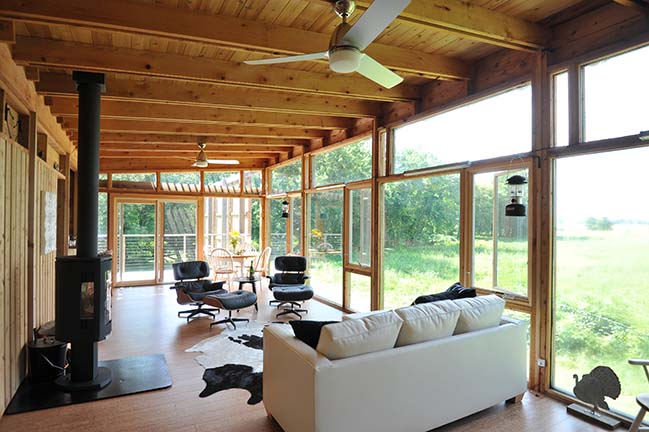09 / 05
2023
The beginning of the story of using cardboards creating exhibition space can be traced back to October 2022, when Power Station of Art was holding the exhibition Back to the Future: Breaking the Time Barrier (curated by Zuo Jing and Wang Yanzhi), with an exhibition space constructed by highly recyclable corrugated cardboards.
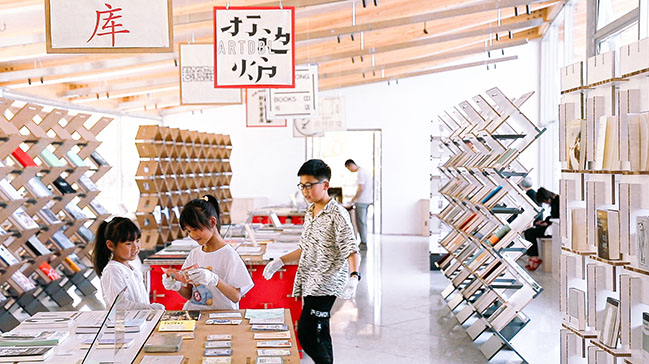
> Shared Lady Beetle - A Micro Movable Library for Kids by LUO studio
> 9.639: An Inserted Variable Office in Beijing by LUO studio
Project's description: In late April 2023, LUO studio was invited again by curator Zuo Jing to join the TBB Xinyang Book Market: Books 'N Tea event. The studio was asked to design and build exhibition settings for 18 different bookstores and institutions engaged in the temporary book market. The location of the exhibition was set in Autumn Bookhouse and Winter Bookhouse (designed by Atelier Liu Yuyang Architects) in Baihuayuan Four Seasons, Xinyang, Henan Province. It was also a task with strict time limit, that the whole process of design, communication, processing and construction needed to be finished within 7 days. Therefore, how to create spatial diversity within such a tight schedule was essential yet challenging.
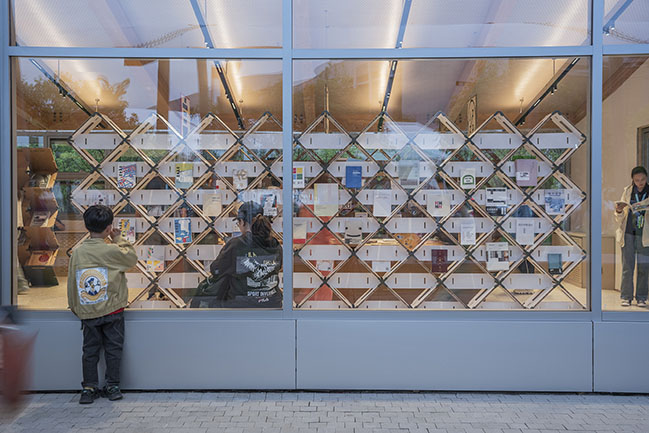
1. Follow the Architectural Space
The exhibition venue is a small building complex with a fan-shaped plane. Buildings in the north and south of the site are arranged symmetrically along the east-west axis. Among them, the north building consists of two independent spaces under the same roof, presenting two small circular sectors on the plane, one of which is used for forum and activities, and the other is for special exhibitions including SYU HEOI CANTON and Expo of Local Publications.

The plane of the south building appears to be a complete fan shape. It provides a larger exhibition space for 18 bookstores and institutions. In the middle of the circular space is an open sector composed of three spans, suitable for placing bookshelves and tables. The combination of two rows of bookshelves facing the outer glass windows and one row of exhibition tables in the middle, is arranged in the space of each span. This creates three parallel areas (two bookshelves and four small tables in each area). In this way, efficient spatial division for the 18 bookstores is realized in a way that conforms to the architectural space.
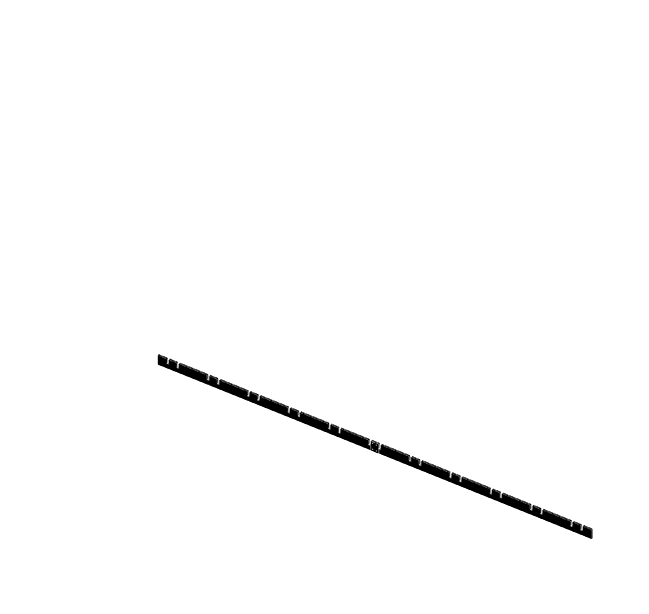
2. Various Types of Construction
As the 18 different independent bookstores participating in the exhibition have various concepts, it is very important to create diversity through effective design methods, which facilitates not only the distinction between bookstore brands, but also the organization of the exhibition. According to the size of the three spans in the building, three different methods to assemble the display bookshelves were worked out, including vertical-horizontal plugging, front-rhombus plugging and lateral-beveled plugging. In this way, each section of the bookshelves between the three spans is different.

The three bookshelf assembly methods also considered the ways of placing and fetching books of various sizes. The bookshelves assembled with vertical-horizontal plugging can place books of different sizes, and this type of bookshelf can also hold the largest number of books. The type of bookshelves installed through front-rhombus plugging method is more suitable to present hardcover books.

While for softcover and smaller-sized books, a bended acrylic card component needs to be attached, so as to meet the demands for placing more variety of books. However, fewer books can be placed due to the increase of flexibility in this way. The capacity of different types of bookshelves with distinct assembling methods, exactly corresponds to the varied number of books (40, 60, 80, etc.) provided by each bookstore.
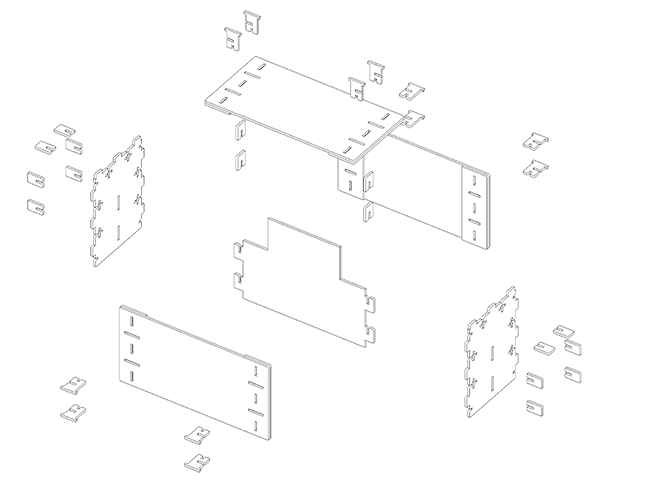
3. Corrugated Cardboards in New Colors
In 2022, the space for the Back to the Future: Breaking the Time Barrier exhibition held at the Power Station of Art, Shanghai was constructed by using corrugated cardboards in the regular light brown color of kraft paper. In early 2023, the design team received several paper samples in red, black and white colors newly developed by the paper factory. And different colors could be set as single-sided covering or double-sided cladding. The new colored papers provided varied possibilities for the version 2.0 of exhibition space constructed by corrugated cardboards.
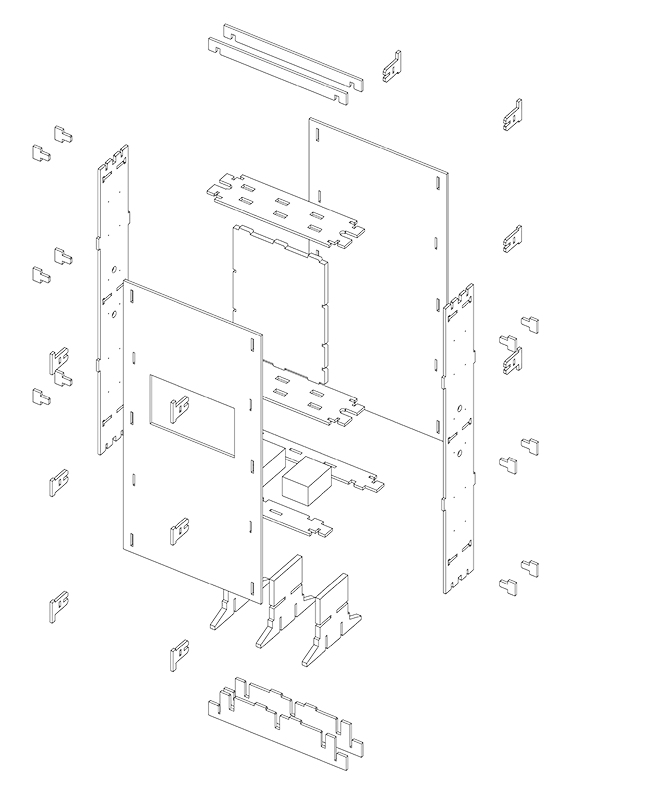
In a very limited time, taking up to 18 bookstores into consideration, LUO studio chose to use the three new colored paper materials, and matched different colors with different construction methods, to finally form a wide variety of exhibition bookshelves.
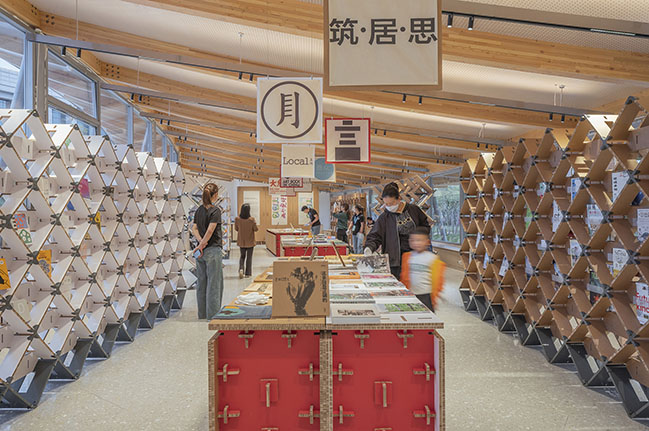
4. Prefabricated & Handcrafted & Reversible
Limited by objective conditions, the task was to take no more than 7 days to complete the whole process from design to construction for the exhibition space for the temporary book market, so the construction must be highly standardized. All the components were manufactured rapidly in a mechanized way in the factory, and modularly assembled on site. This achieved high rate of prefabrication, avoiding large waste of time caused by on-site construction.
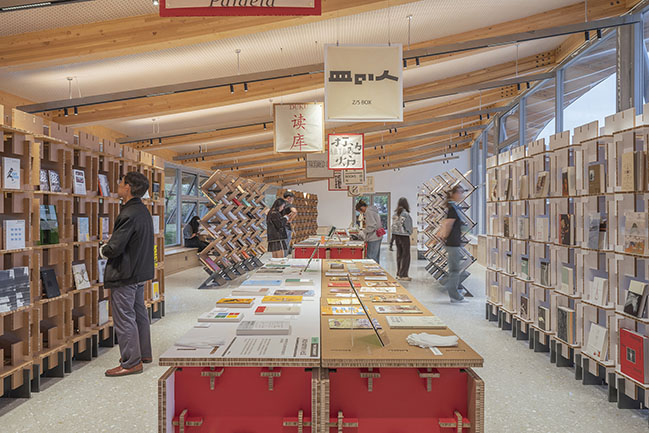
However, the highly industrialized production method is obviously contrary to the humanistic attributes of books. To strike a balance, Yukou Paper, which is handmade by a very unique ancient papermaking method, was chosen for printing the graphic design deliverables such as the exhibition preface, posters, and bookstore logos, instead of using regular paper produced in an industrial way. This kind of paper is slightly yellow and roughly textured, that matches well with the corrugated cardboards on its background, bring the impression of handcraft and correspond to the humanistic attributes of books. The curator Zuo Jing has been promoting this ancient handmade papermaking technique by using Yukou Paper in his daily work.
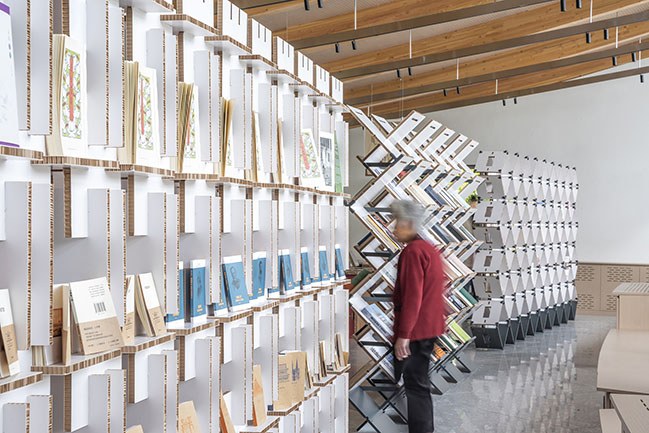
The project did not adopt the common way of screen printing on the exhibition wall, nor did it use industrial paper pasted directly on the wall, but chose to press the corners of Yukou Paper with nails on corrugated cardboards. The construction method provides more convenience for the recycle and reuse of the corrugated cardboards after exhibition, and realizes high reversibility of the materials. This is consistent with the curator and design team's dedication in sustainable practice for a long time.
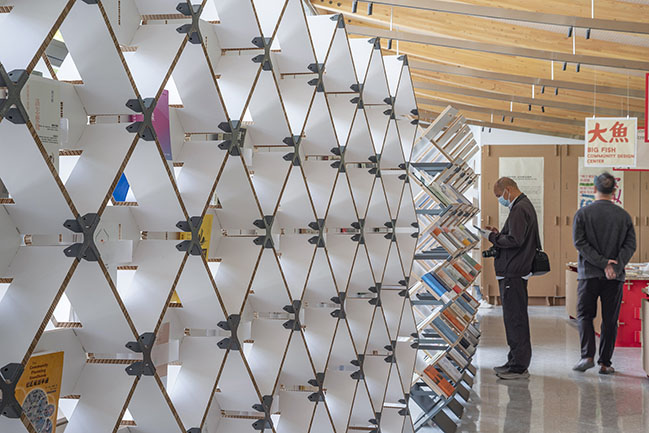
Design Firm: LUO studio
Location: Autumn Bookhouse/ Winter Bookhouse, Baihuayuan Four Seasons, Yangshan New District, Xinyang, China
Year: 2023
Exhibition space area: 301 sqm
Space design & construction: Luo Yujie, Lu Zhuojian, Wang Beilei, Hong Lun, Cao Yutao, Liu Chonghao (Intern), Geng Ruijia (Intern)
Organizers: CPC Xinyang Municipal Committee, Xinyang Municipal Government
Co-organizers: CPC Yangshan New District Committee, Management Committee of Yangshan New District
Execution: Xinyang Xinzi Investment Group Co., Ltd., Xinyang Two Are Better Co., Ltd.
Chief curator: Zuo Jing
Co-curator: Tan Fang
Executive curator: Peng Yanhan
Exhibition curators: Fen Lei, Hu Yanzi
Exhibition design: Atelier Liu Yuyang Architects
Visual design: He Jianping
Photography: Jin Weiqi, Bonnie, Zhang Xiaoshu

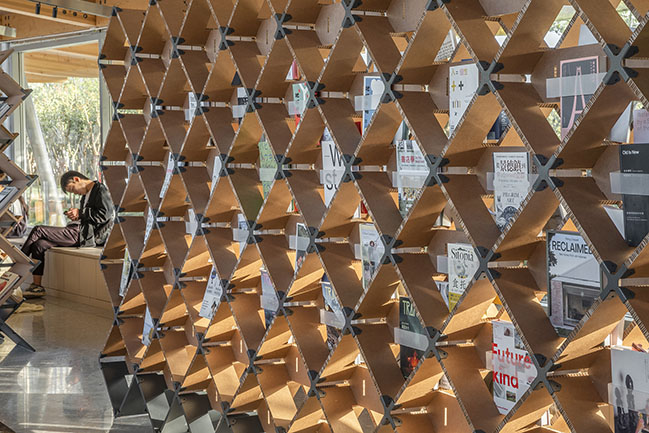
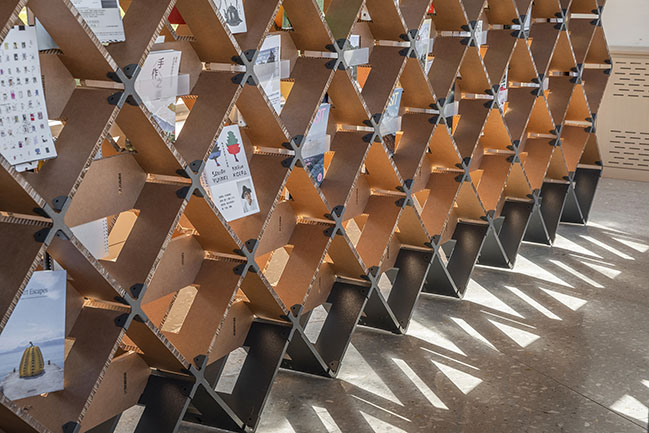

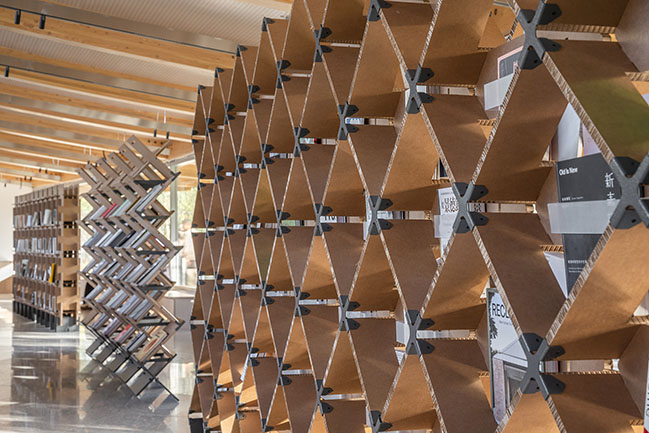

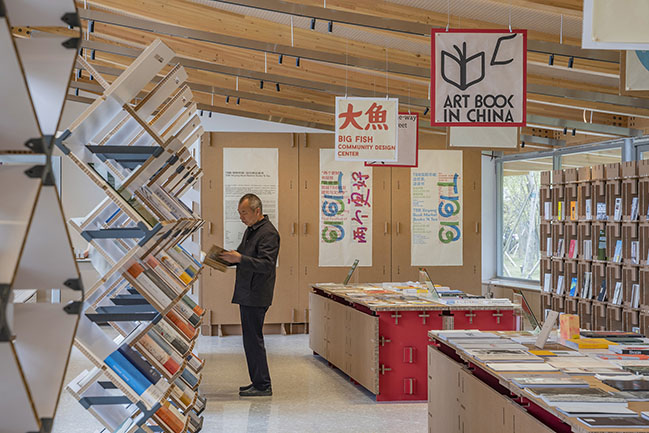
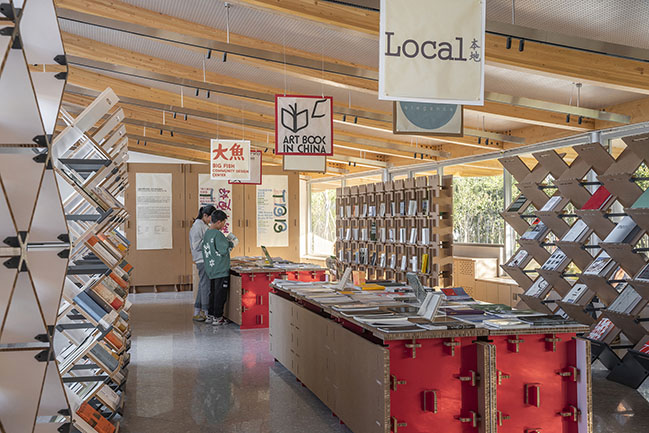

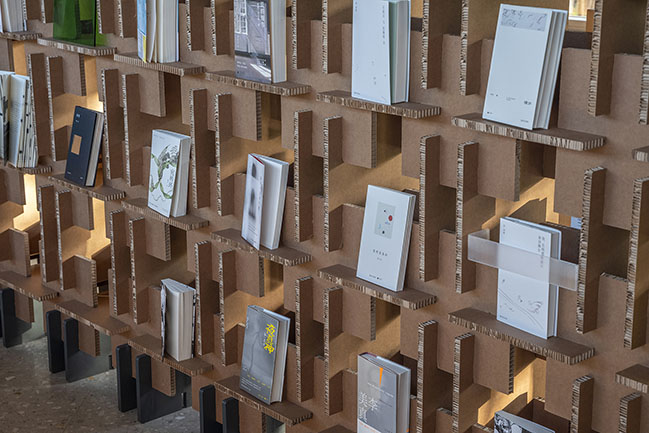
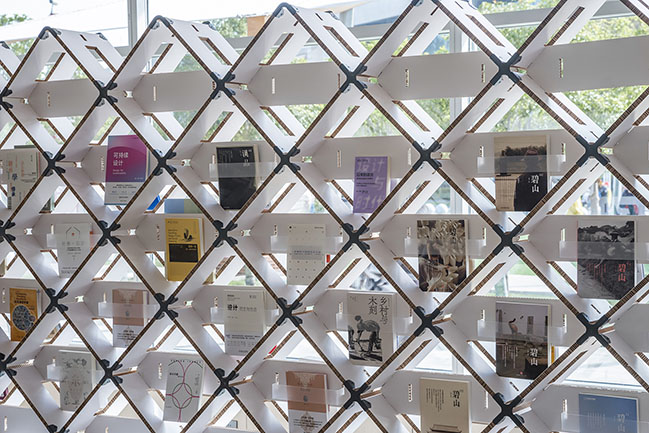

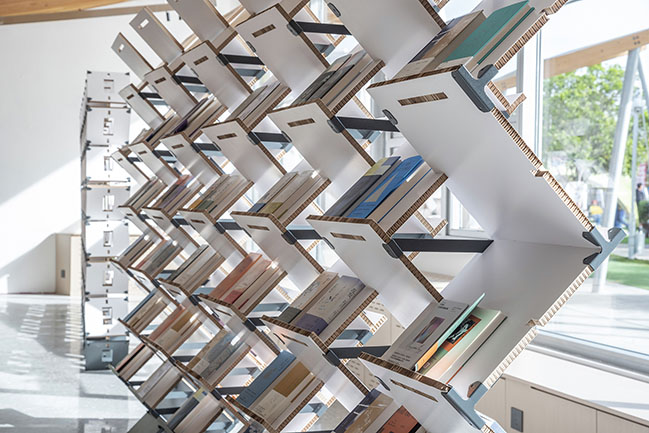

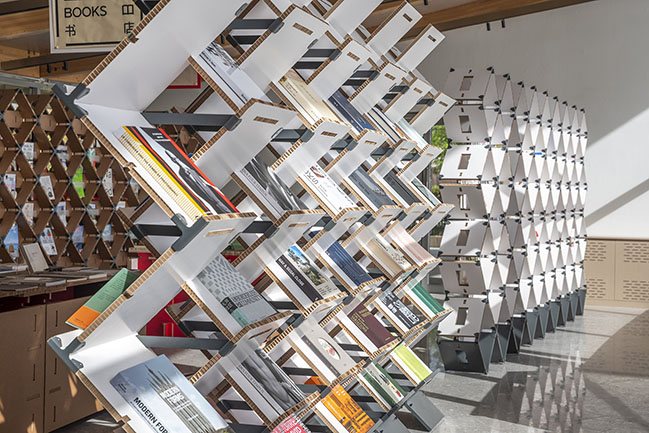
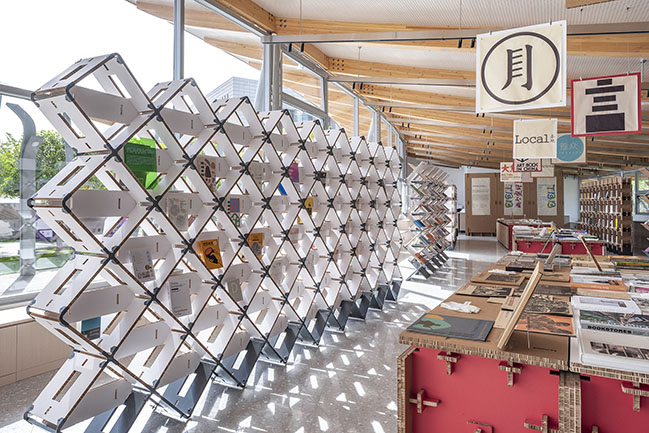
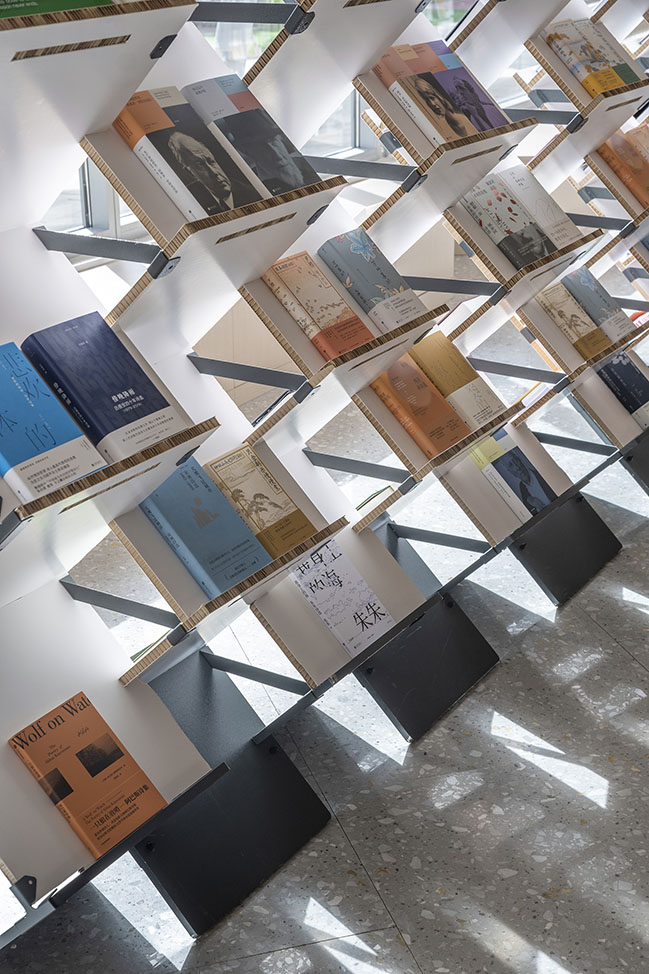
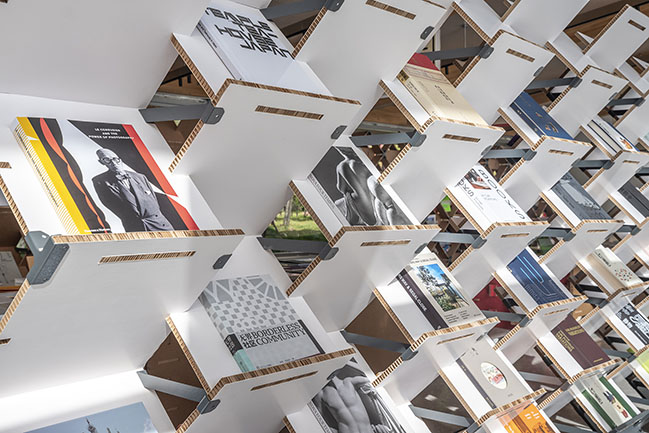


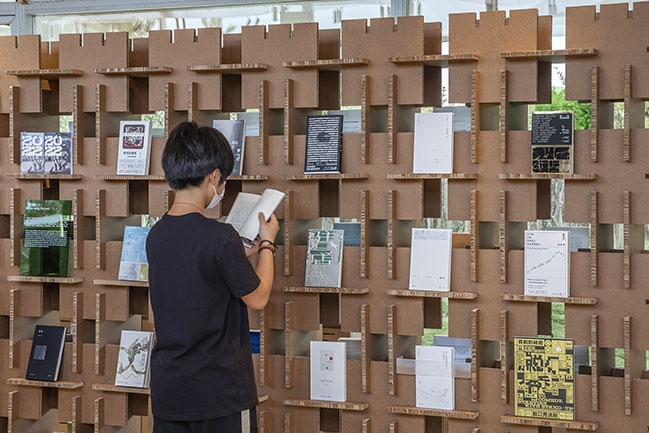



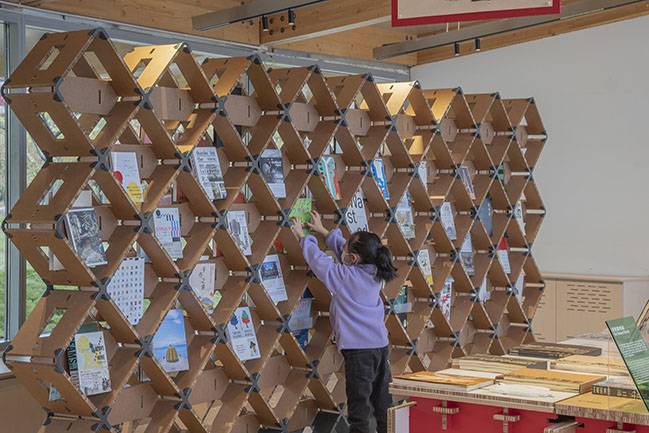
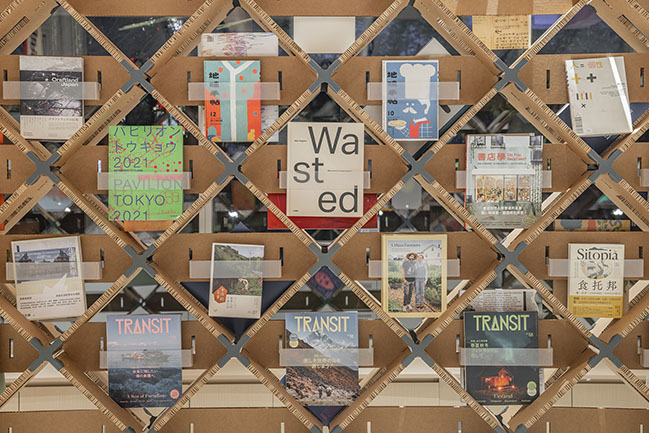
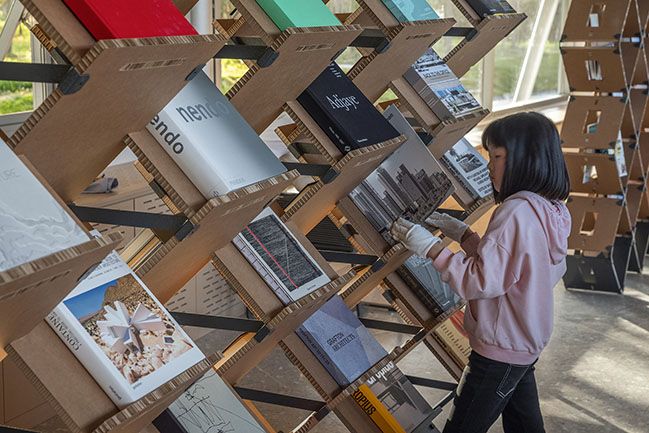
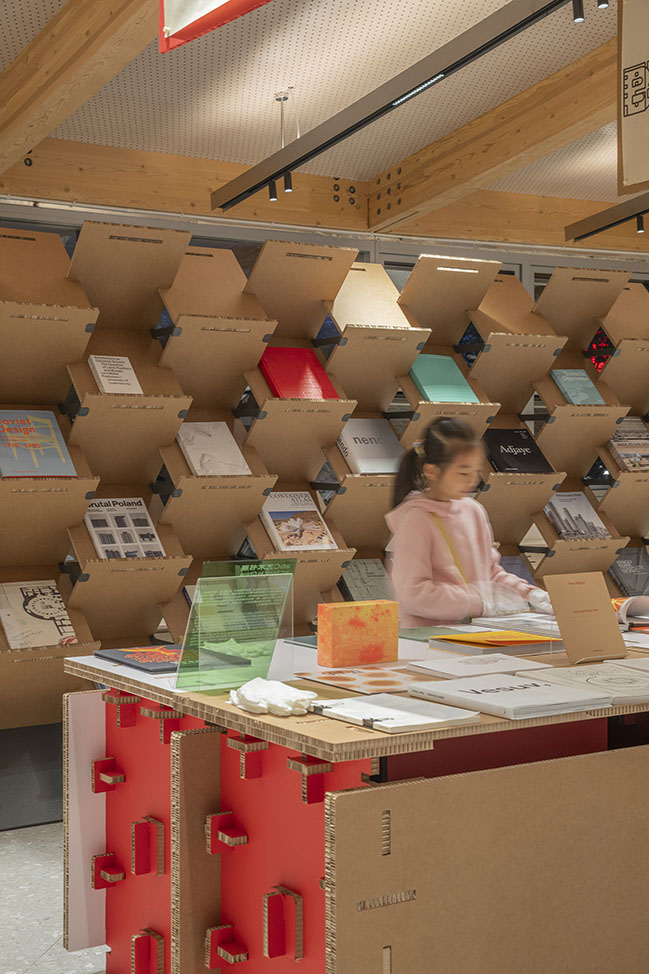
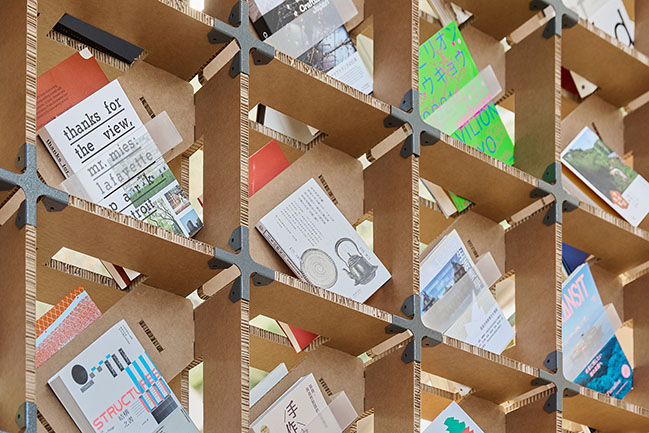
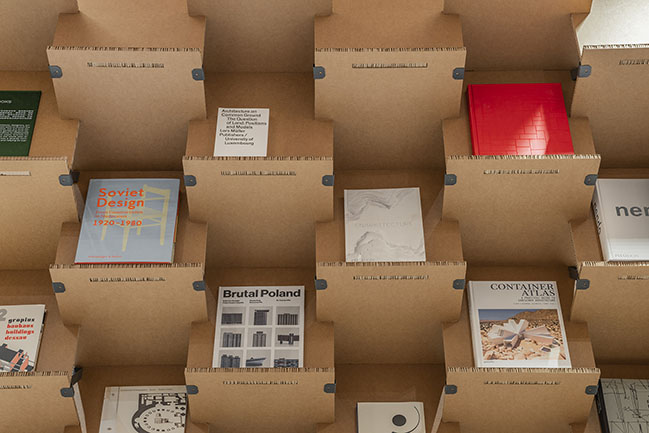
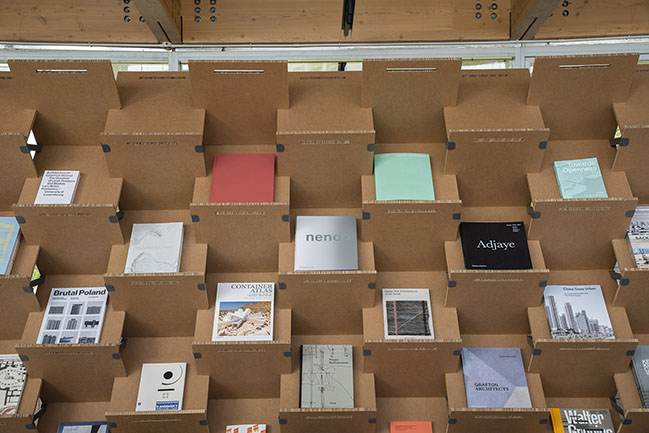
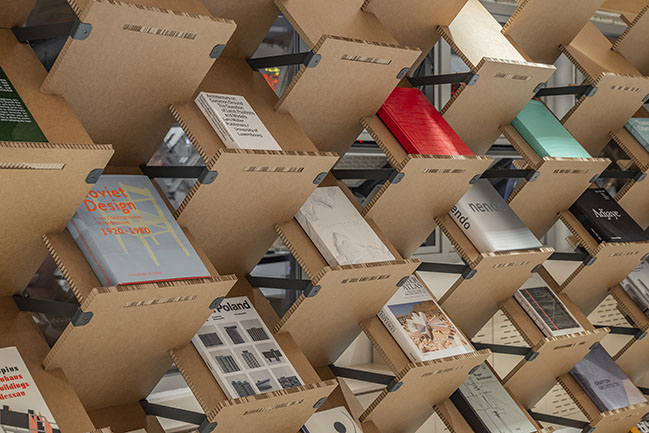
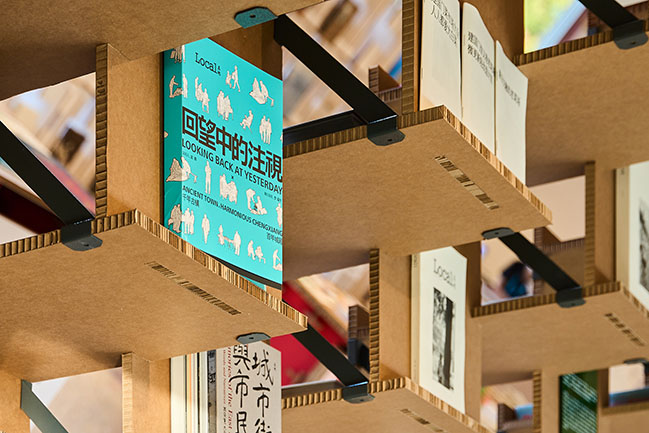
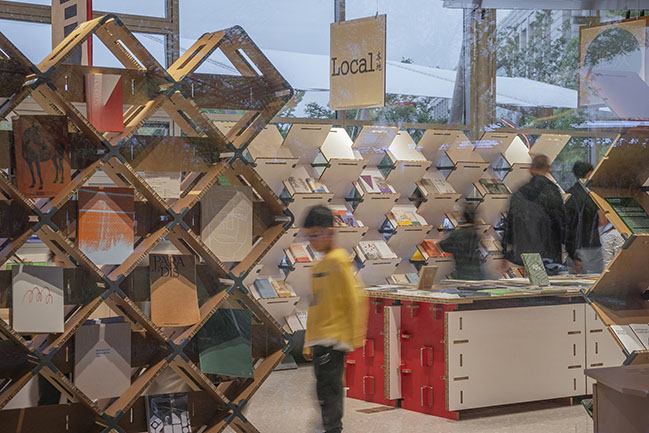

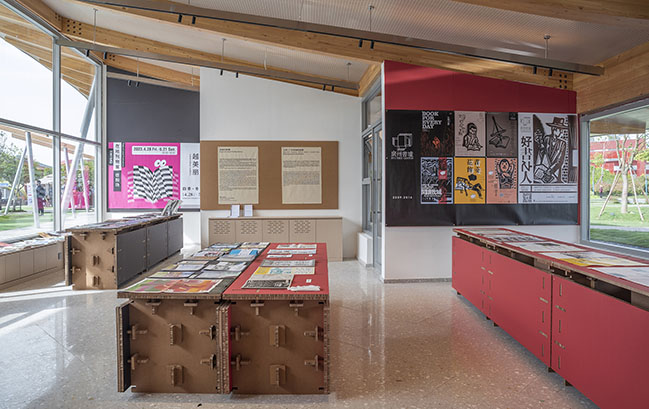
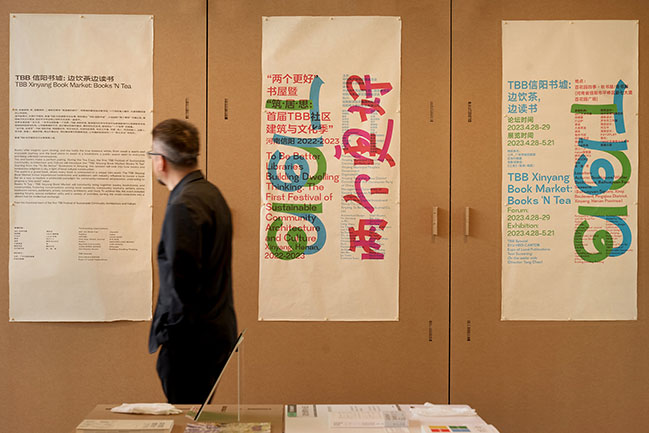



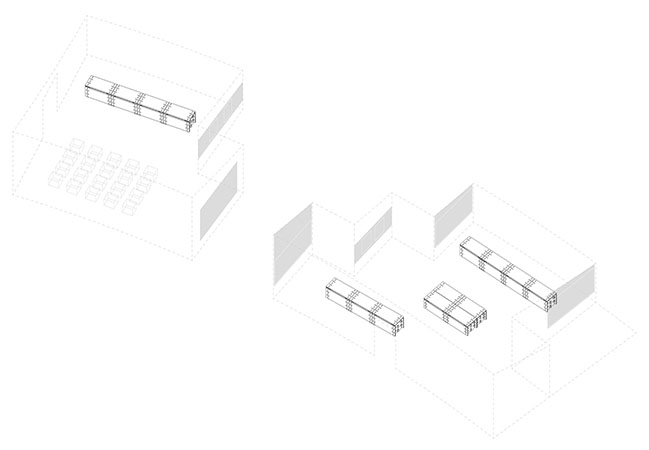
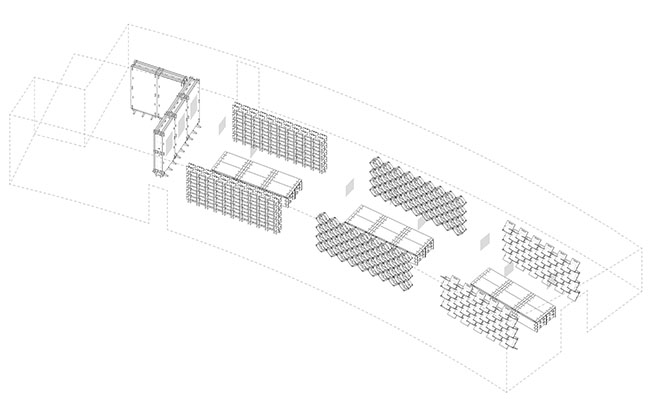
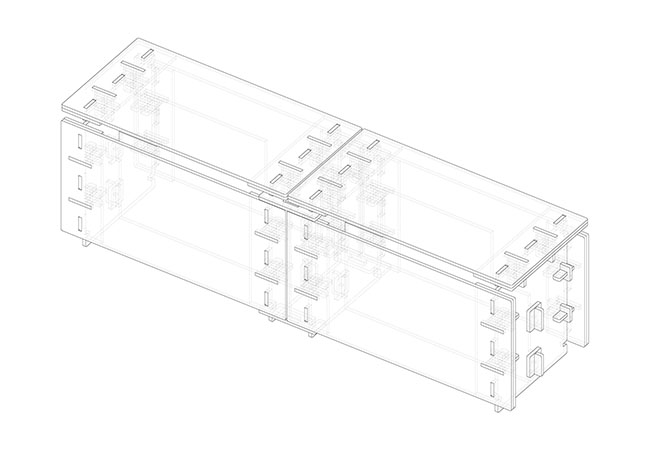

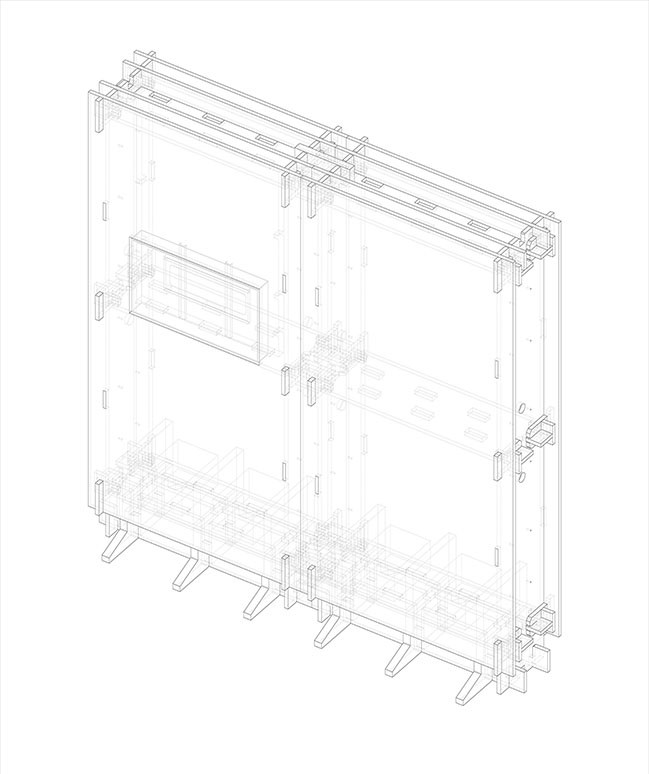
Cardboard-formed Exhibition Space 2.0 - Xinyang Book Market: Books 'N Tea by LUO studio
09 / 05 / 2023 6 Types of Construction Modules × 3 Kinds of Corrugated Cardboards = 18 Bookstores. The beginning of the story of using cardboards creating exhibition space can be traced back to October 2022...
You might also like:
Recommended post: Glass Cabin in Fairbank by atelierRISTING

